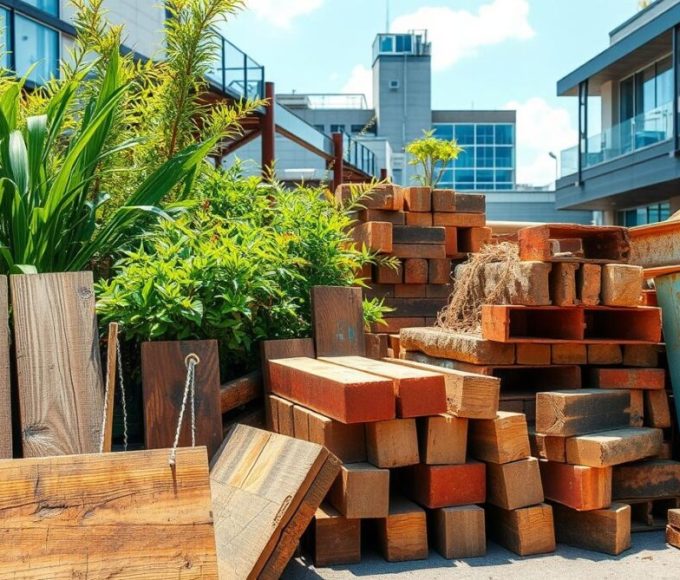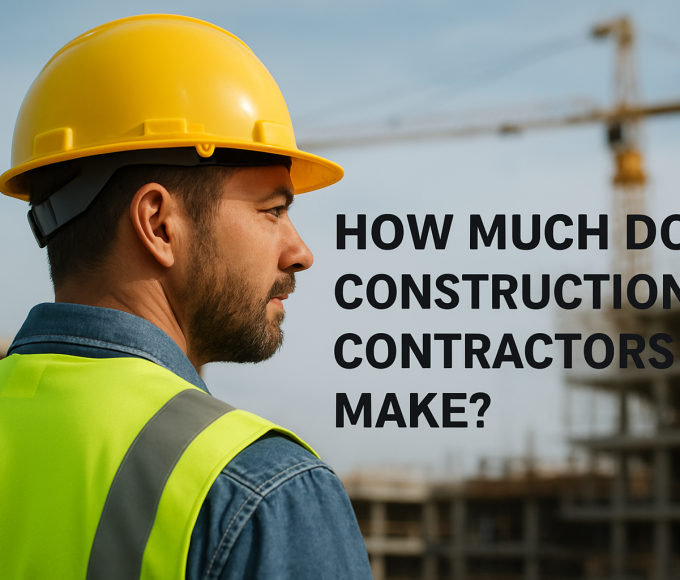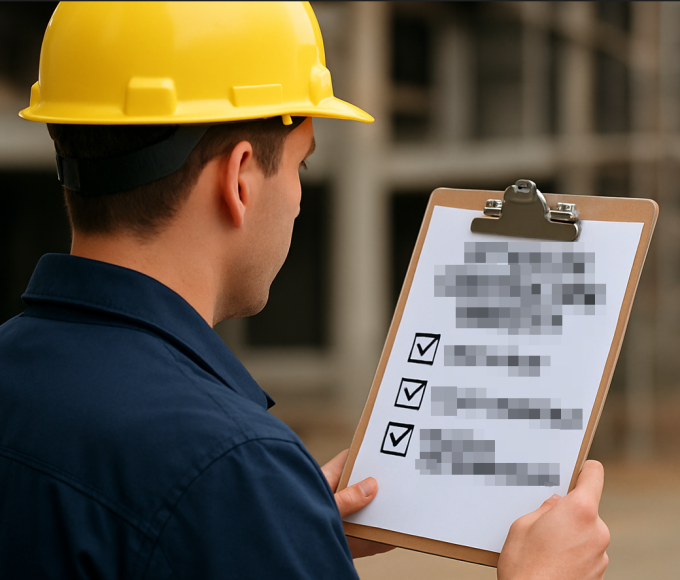Building a new home is exciting, but guessing costs can feel tricky. Prices change often, and surprise expenses can pop up anytime. So, how do you set the right budget without getting confused? This friendly guide will help you plan with confidence. We’ll share clear facts, easy numbers, and simple tips. When you finish, you’ll know exactly how to estimate new home construction costs.
Understanding the Cost Breakdown of New Home Construction
Before starting your build, you need a clear picture of where your money will go. Building costs are divided into several main parts. When you know these parts, your budget stays on track.
Think about your budget like slices of a pie. Each slice represents a part of the total cost. Here’s a simple breakdown:
| Cost Type | Percentage of Total Cost | Example |
| Materials | 35% | Wood, roofing, concrete |
| Labor | 25% | Builders, plumbers, electricians |
| Land Cost | 15% | Cost of the lot |
| Permits and Fees | 5% | City permits and inspections |
| Site Work | 5% | Land clearing, utility connections |
| Financing & Insurance | 8% | Loan interest, insurance |
| Builder’s Profit | 7% | Contractor earnings |
Let’s briefly explain these costs:
- Materials usually take the biggest chunk. Prices jumped a lot in 2024 due to shortages. For instance, lumber costs rose almost 18% last year alone.
- Labor is another large slice of your budget. Good workers cost money, and pay rates keep rising. A recent study shows labor costs increased by 9% in parts of the U.S. in 2024.
- Land Cost depends heavily on location. Buying land in cities or popular suburbs costs much more than in rural areas. Always check recent land prices near you to stay accurate.
- Permits and Fees may seem small, but they add up quickly. Permit approval can slow you down, sometimes taking two months or longer, especially in busy cities.
- Site Work prepares your land for building. Grading, utility hookups, and clearing trees can quickly push costs higher than you planned.
- Financing and Insurance are ongoing costs you pay during the build. Construction loans also have interest rates that can add thousands to your final price tag.
- Builder’s Profit ensures your project stays on track. It’s the amount your builder earns for managing everything smoothly.
When you understand these parts, estimating your budget gets simpler. Each cost becomes less surprising. Now, you’re ready to learn more about how to estimate new home construction costs without stress.
Key Factors Influencing Construction Costs
When figuring out how to estimate new home construction costs, you need to understand the key factors that cause costs to change. So, these factors make prices rise or fall, sometimes quickly. Knowing them helps you keep your budget safe.
Here are the most important factors:
Location Matters
Where you build your home plays a big role in the total cost. Homes in cities usually cost more than homes built in smaller towns or rural areas. This happens because land prices and local wages vary.
For example, in 2025, building a house in California averaged around $250 per square foot. In Texas, the cost averaged closer to $150 per square foot. So, checking local averages saves you from guessing.
Home Size and Design Complexity
Bigger homes naturally cost more to build. But size isn’t the only factor. Complex home designs also drive costs up. Homes with special shapes, high ceilings, or many custom features take more labor and materials.
- Simple ranch homes usually stay within budget easily.
- Custom designs or two-story homes often add 15–20% to your costs.
Finally, choosing simpler floor plans helps control spending without sacrificing comfort.
Choice of Materials
Materials directly affect your budget. Standard materials like vinyl siding or asphalt shingles keep costs manageable. Premium materials such as stone, custom cabinetry, or hardwood floors increase your spending fast.
In 2024, a survey showed that upgrading from vinyl siding to brick could add as much as 10% to your home’s total construction cost.
Labor Costs and Availability
Skilled workers are essential for a successful build, but also cost money. Labor shortages mean paying more. In 2024, labor shortages across the U.S. led to builders paying about 9% more for workers than the year before.
Hiring local labor helps keep costs lower. But always expect labor to remain a major expense in your build.
Economic Conditions
The economy directly affects your budget. Inflation makes all prices rise, including building costs. Interest rates affect your construction loan payments, too.
In early 2025, building costs rose nearly 5% due to continued inflation. Keeping an eye on the economy can help you plan and avoid surprises.
Estimating Costs Per Square Foot
People commonly learn how to estimate new home construction costs by calculating the cost per square foot. It’s an easy method that gives you a realistic starting point.
Here’s what you should know about estimating costs per square foot:
Understanding Square-Foot Costs
The cost per square foot shows how much you’ll pay for each square foot of living space. Therefore, it covers materials, labor, and builder’s fees. In 2025, the average U.S. cost ranged from about $100 to $200 per square foot.
So, this means:
- Building a basic 2,000-square-foot home might cost around $200,000 to $400,000.
- Premium features or high-end materials can also push costs above $250 per square foot.
Regional Differences
Prices vary widely depending on your region. Here’s a quick look at average costs from early 2025:
| Region | Cost per Sq Ft (Average) |
| Northeast (NY, MA) | $220 – $300 |
| South (TX, GA) | $120 – $180 |
| Midwest (OH, IL) | $100 – $150 |
| West Coast (CA, WA) | $200 – $350 |
Always check current local costs. It also gives you a more accurate estimate for your specific build.
Online Cost Calculators
Online cost calculators can provide rapid approximations based on your location, house size, and design decisions. Easy-to-use tools available on websites such as HomeAdvisor and Building Journal can rapidly illustrate the possible cost of your house.
Finally, these free calculators let you make quick changes based on how the design or materials alter your final cost.
Pre-Construction Expenses to Consider
You will face certain early expenses before your development even begins that usually catch homeowners unaware. Knowing them will help to avoid subsequent problems.
Firstly, you will want thorough home blueprints that an engineer or architect created. Usually, depending on the level of detail of your house, these blueprints might cost $2,000 to $8,000. Land surveys and soil tests, which typically run between $500 and $2,500, follow next.
You pay for licenses once your plans are ready. Building permits range greatly, usually between $1,200 and $4,000. Busy cities might even charge more. Connecting utilities, including water, power, and sewer, might also add another $3,000 or more.
However, don’t overlook title fees or legal expenses if you purchase land. So, these may readily add $1,000 to your spending plan.
In short, pre-construction expenses can easily reach $10,000 or more before breaking ground. Finally, knowing these numbers upfront makes learning how to estimate new home construction costs more accurate and keeps your budget safe.
Tech Tools That Help Estimate Costs
Technology makes figuring out how to estimate new home construction costs simpler than ever. Easy-to-use tools let you plan quickly and accurately:
- Online Cost Calculators
- Provide instant estimates based on your home’s size, style, and location.
- Examples: HomeAdvisor, Building Journal, CostToBuild.net
- Construction Estimating Software
- Track your budget in real-time throughout your project.
- Examples: Buildertrend, CoConstruct, Houzz Pro
- Spreadsheet Templates
- Easily list and manage costs in one place.
- Tools: Excel, Google Sheets (free, simple, effective)
- Mobile Budgeting Apps
- Help you quickly adjust your numbers from anywhere.
- Popular apps: Magicplan, BuildBook
Using these simple tech tools, you’ll also have clear, organized numbers from start to finish. They also help you catch surprises early and keep your build running smoothly. Finally, this practical approach makes how to estimate new home construction costs feel manageable, not overwhelming.
Current Trends Driving Construction Pricing
With changes in the market, you must track today’s hot issues. How To Estimate New Home Construction Costs? Prices rise or fall fast, so staying informed protects your budget.
- Material Swings
- Lumber peaked at $700 per thousand board feet in 2024, then dropped 20 %.
- Steel framing grew 12 % last year after global supply delays.
- Labor Shifts
- Skilled‑worker shortages added about 9 % to pay rates nationwide.
- Meanwhile, many builders now offer signing bonuses to hold crews.
- Interest‑Rate Pressure
- Because mortgage rates climbed above 7 % in early 2025, borrowing costs surged.
- Higher rates push monthly loan payments up, squeezing total budgets.
- Energy and Fuel Costs
- Diesel reached a two-year high, raising delivery fees for heavy goods.
- Concrete suppliers added a fuel surcharge of 3 % in many states.
Therefore, watch these trends monthly. Quick checks let you adjust numbers before contracts lock in. By doing so, you keep your plan strong and avoid sudden shocks.
Tips to Manage and Reduce Overall Costs
Smart planning keeps spending in line. Whenever you ask How To Estimate New Home Construction Costs?, use these simple tactics.
- Stick to a Simple Shape
- Straight walls and low-pitch roofs cut framing time and waste.
- Choose Mid‑Grade Materials
- Durable vinyl flooring often costs half as much as hardwood yet lasts for years.
- Lock Prices Early
- Ask suppliers for fixed-price contracts before market swings hit.
- Bundle Tasks
- Scheduling trades back-to-back reduces rental days for lifts and dumpsters.
- Add a 10 % Cushion
- Because surprises happen, a small reserve prevents panic spending.
- Review Plans Weekly
- Quick meetings catch scope creep before it eats your budget.
- Compare at Least Three Bids
- Competitive quotes can lower labor totals by 5 % or more.
Using these clear steps, you’ll also keep costs under control and finish the build with less stress. So, consistent review stops small overages from turning into big setbacks.
Make Decisions that Matter
Building costs can spiral, yet smart planning keeps them in check. Firstly, break your budget into clear cost slices. After that, use reliable tech tools to track every dollar. Then, watch local price trends and lock in materials early. Always add a 10 percent cushion for surprises. Finally, revisit estimates often and adjust before work starts. When you follow these steps, your new home stays on budget. So, each choice moves you closer to a secure, affordable, and stress-free build.

















Leave a comment